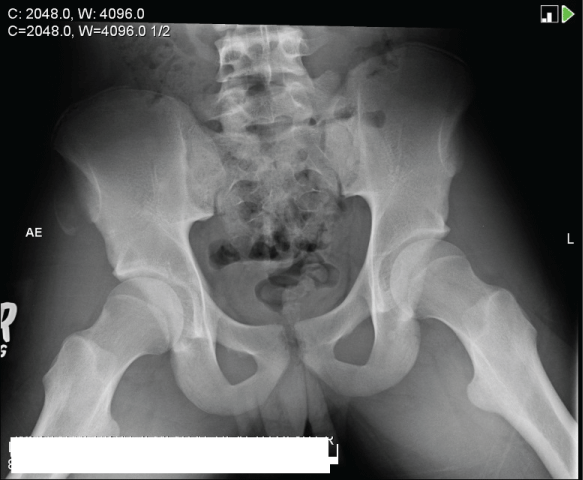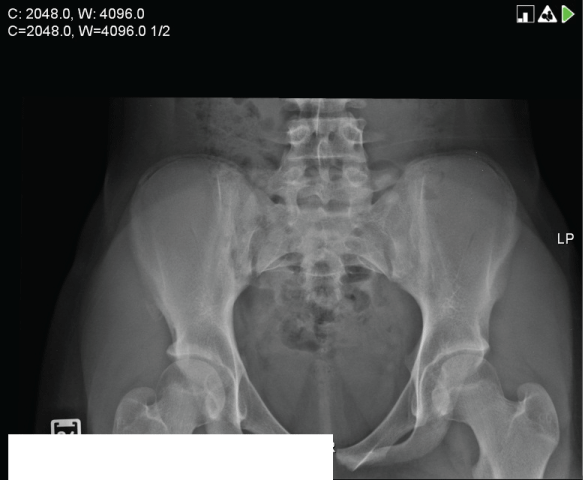International Journal of Sports and Exercise Medicine
Mosh Pit Injuries: A Case Series of Avulsion Fractures in 2 Adolescents
Muhammad Waseem1,3*, Sabeeda Kadavath2, Swathi Sethuram2, Husayn Al-Husayni2 and Gerard Devas2
1Department of Emergency Medicine, Weill Cornell Medical College of Cornell University, USA
2Lincoln Medical and Mental Health Center, USA
3St. George's University, Grenada, West Indies
*Corresponding author: Muhammad Waseem, MD, MS, Associate Professor of Emergency Medicine, Lincoln Medical and Mental Health Center, 234 E. 149th Street, NY, NY 10451, USA, E-mail: waseemm2001@hotmail.com
Int J Sports Exerc Med, IJSEM-1-004, (Volume 1, Issue 1), Case Report; ISSN: 2469-5718
Received: February 02, 2015 | Accepted: April 14, 2015 | Published: April 17, 2015
Citation: Waseem M, Kadavath S, Sethuram S, Al-Husayni H Devas G (2015) Mosh Pit Injuries: A Case Series of Avulsion Fractures in 2 Adolescents. Int J Sports Exerc Med 1:004. 10.23937/2469-5718/1510004
Copyright: © 2015 Waseem M, et al. This is an open-access article distributed under the terms of the Creative Commons Attribution License, which permits unrestricted use, distribution, and reproduction in any medium, provided the original author and source are credited.
Abstract
Apophyseal avulsion fractures are almost exclusive to the adolescent population. It has been commonly associated with sports injuries. In our case reports, we identify two cases of these apophyseal avulsion fractures with no history of routine physical activity. In the context of our patients, identifying causation of hip pain was essential to understanding the mechanism of any trauma resulting in fractures. The adolescents presented in this case series reported a history of mosh pit activity after rigorous probing. If left unidentified, these injuries may be confused for minor muscle strains, possibly resulting in chronic complications.
Increasing participation in mosh pit activities among the adolescent population, especially in the South Bronx region of New York City, demands an increased vigilance among physicians in order to identify apophyseal avulsion fractures. Diagnosis of the condition we describe can be made by obtaining plain radiographs of the pelvis. However, these avulsion fractures can be severely debilitating if not identified and treated.
Keywords
Mosh pit, Avulsion fracture, Hip pain, Limping, Adolescents
Introduction
Avulsion fractures result when the fracture fragment is pulled from its parent bone by forceful contraction exerted by a tendon or ligament. Apophyseal avulsion injuries are common to the adolescent and young adult population, between 14 to 25years of age. These injuries are commonly seen among professional athletes and those participating in sports. A history of mosh pit activity has been elicited in some teenagers with no other sporting history, as has been described in our case series. We need to be cognizant of these strain-related injuries when dealing with fractures in young adults.
Case Report
We report two cases of iliac apophyseal fractures following mosh pit activities in adolescents.
Case 1
A 13 year-old female presented to the Emergency Department (ED) with a one-day history of right hip pain after participating in mosh pit activities. She denied any past medical history of right hip pain, direct trauma or fever. Vital signs were as follows: Temperature 36.88°C (98.4°F), heart rate 66 beats/minute, blood pressure 122/70mmHg, respiratory rate 18 breaths/minute and oxygen saturation 99% room air. In the ED she was limping. Physical examination revealed tenderness over the anterior iliac crest. Active range of motion of the right hip was limited due to pain. The remainder of the examination was unremarkable. A radiograph of her pelvis revealed an avulsion fracture of the right anterior superior iliac spine (Figure 1).
Case 2
A 15 year-old male, with no significant past history presented to the ED with right hip pain. Two weeks prior, he attended a concert in a mosh pit, noting right hip pain for 2 days following the event. He did not seek medical attention and was able to ambulate. The pain gradually resolved with rest and ibuprofen. He resumed his mosh pit activity one day prior to presentation, where he stated that he heard a crack in his right hip. He was unable to ambulate at the scene. He reported a non-radiating pain, with a score of 8/10, worsened when lying down and improved with sitting. Vital signs were as follows: Temperature 36.77°C (98.2°F), heart rate 68 beats/minute, blood pressure 128/70mmHg, respiratory rate 18, and oxygen saturation 99% room air. Examination of his right hip revealed tenderness to palpation over the joint and a decreased range of movement at his hip joint. His plain radiograph of the pelvis revealed an avulsion fracture of the right anterior superior iliac spine (Figure 2).
Discussion
Anatomy
The direct head of the rectus femoris muscle originates from the anterior inferior iliac spine and inserts through the common quadriceps tendon onto the tibial tubercle. Because it crosses two joints, patients with anterior inferior iliac spine avulsion fractures may have weakness in hip flexion and knee extension. The Sartorius muscle originates from the anterior superior iliac spine. Avulsion at the origin will result in weakness of flexion and abduction at the hip joint and flexion at the knee joint. The tensor fasciae latae originates from the iliac crest and inserts at the iliotibial tract. Avulsion at the origin may result in weakness of flexion and abduction at the hip joint. Apophyseal avulsion fractures of the iliac crest are usually the result of a trunk twisting injury. Weakness of knee flexion and hip extension are characteristic of avulsion fractures in the ischial tuberosity, since it is the proximal attachment site of the hamstrings [1].
Mechanism
Typical avulsion fractures are described as involving forceful muscle contraction during sports activities. Apophyseal avulsion fractures are usually caused by hip hyperextension and knee flexion [2]. The mechanism is an indirect injury, a sudden forceful muscular contraction pulling on sections of bone. Fractures occur when a significant force impacts the apophyses, which are the weakest link in the musculoskeletal chain [3,4]. These fractures could be mistaken for insertional tendinitis or musculo-tendinous tear [5]. They are more common in boys [6] and occur predominantly during athletic activities [7]. The most commonly involved sports are soccer, football, skating and gymnastics [8]. The most common sites of injury are the anterior inferior iliac spine, anterior superior iliac spine, and ischial tuberosity; hence involving the rectus femoris, sartorius and hamstring muscles, respectively [9].
Presentation
The usual presentation includes localized pain and swelling, limping and limited range of motion. Physical examination is conducted with the patient in a supine position. It may reveal pain on passive stretch of the muscle [8]. Plain radiographs of the pelvis can help make the diagnosis and determine the degree of fracture displacement. MRI can be used to identify any ligament tears if any, in the case of normal radiography. Most avulsion fractures can initially be treated conservatively with bed rest and pain medications, followed by non-weight bearing use of crutches for the first week to avoid further avulsion [10]. More than 3 cm of displacement may warrant open reduction and internal fixation [1].
Conclusion
1) In the absence of direct trauma or sporting history, a high index of suspicion is necessary to diagnose apophyseal avulsion fractures.
2) “Moshing” has become an increasingly popular activity in the teenage population. Emergency physicians should be vigilant and inquire about participation in such activities, especially in the absence of other sporting injury causing trauma or hip pain.
3) Conservative management and rest is generally required to treat a majority of the patients with apophyseal avulsion fractures with diagnosis being made by plain radiograph. However, CT scan may sometimes be needed for adequate delineation.
References
-
McKinney BI, Nelson C, Carrion W (2009) Apophyseal avulsion fractures of the hip and pelvis. Orthopedics 32: 42.
-
Atalar H, Kayaoglu E, Yavuz OY, Selek H, Uras I (2007) Avulsion fracture of the anterior inferior iliac spine. Ulus Travma Acil Cerrahi Derg 13: 322-325.
-
Saluan PM, Weiker GG (1997) Avulsion of the anterior inferior iliac spine. Orthopedics 20: 558-559.
-
Lambert MJ, Fligner DJ (1993) Avulsion of the iliac crest apophysis: a rare fracture in adolescent athletes. Ann Emerg Med 22: 1218-1220.
-
Uslu M, Un A, Ozsahin M, Besir FH, Ataoglu S (2013) Avulsion fracture of the anterior inferior iliac spine in a soccer player. PM R 5: 732-733.
-
Houghton KM (2009) Review for the generalist: evaluation of pediatric hip pain. Pediatr Rheumatol Online J 7: 10.
-
Oldenburg FP, Smith MV, Thompson GH (2009) Simultaneous ipsilateral avulsion of the anterior superior and anterior inferior iliac spines in an adolescent. J Pediatr Orthop 29: 29-30.
-
Bendeddouche I, Jean-Luc BB, Poiraudeau S, Nys A (2010) Anterior superior iliac spine avulsion in a young soccer player. Ann Phys Rehabil Med 53: 584-590.
-
Heyworth BE, Bonner B, Suppan CA, Kocher MS, Yen YM, et al. (2014) Results of Non-operative and Operative Management of Apophyseal Avulsion Fractures of the Hip and Pelvis in Adolescent Athletes. Orthop J Sports Med 2.
-
Hoang BH (2012) Sports Medicine. In: Hay WW Jr, Levin MJ, Deterding RR, Abzug M. CURRENT Diagnosis & Treatment. Pediatrics. (21st edn). McGraw-Hill: 7.







